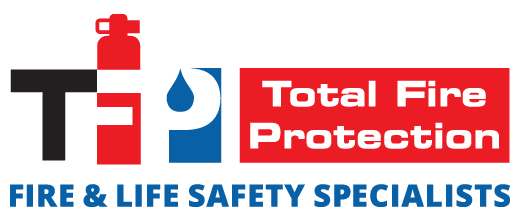 Hydrostatic testing is a way to test the fire extinguisher tank for leaks and overall strength. The National Fire Protection Association (NFPA) publishes rules for how often portable fire extinguishers must be tested. As detailed in the 2018 code, in addition to annual inspections, portable fire extinguishers must be disassembled and hydrostatically tested periodically. This specialized procedure must be completed by a certified service technician.
Hydrostatic testing is a way to test the fire extinguisher tank for leaks and overall strength. The National Fire Protection Association (NFPA) publishes rules for how often portable fire extinguishers must be tested. As detailed in the 2018 code, in addition to annual inspections, portable fire extinguishers must be disassembled and hydrostatically tested periodically. This specialized procedure must be completed by a certified service technician.
What Are the Steps for Hydrostatic Testing?
Hydrostatic testing is a multistage process. Typically, a hydrostatic test is performed as follows:
- Visual inspection, noting things like the condition of the threads and the presence of any corrosion
- Removal of the hose
- Discharging of the extinguisher’s contents until it is empty
- Valve removal
- Pressure testing, where the tank is filled with water then pressurized to between 125 and 150 percent of operational capacity
- During this test, the internal pressure is monitored — decrease in pressure means that there is a leak in the tank and that it must be retired from service
- Draining of the water and refilling with new fire suppressant material
- Updating of decals to reflect successful hydrostatic testing
- Re-pressurization of unit to operational capacity
- Re-installation of safety components, such as the tamper seal, then return to service
What Types of Fire Extinguishers Need to be Hydrostatically Tested?
There are 5 varieties of fire extinguishers, each of which are designed for use on different flammable materials. They all require hydrostatic testing, but how often differs.
- “ABC” rated extinguishers are for use on trash/wood/paper, liquid, and electrical fires, respectively. The most common extinguishers, Class A, Class B, and Class C extinguishers, as well as combined ABC extinguishers, should be hydrostatically tested once every 12 years from the date of manufacture.
- “D” rated extinguishers, for use on flammable metal, need to be hydrostatically tested once every 12 years from the date of manufacture.
- “K” extinguishers, for use on commercial cooking equipment, need to be hydrostatically tested once every 5 years from the date of manufacture.
Ongoing Maintenance is Key to Reliable Performance
Installing portable fire extinguishers in a building is not a “set-it-and-forget-it” task. To ensure they will perform as intended during an emergency, portable fire extinguishers should be regularly inspected, maintained and tested. In fact, it is mandated by law. Between annual inspections, here are some basic maintenance tasks you can do yourself to keep your fire extinguishers ready to reliably perform:
- Make sure the tank is full by weighing it
- Look to see that the safety seals are intact
- Ensure the tank has no physical damage, such as dents or corrosion
- Check that the pressure gauge is within the acceptable pressure range
Inspection, maintenance and testing of your building’s fire extinguishers are required by law. More importantly, ensuring your fire extinguishers are in good working order enhances the safety of building occupants and property.
To learn more about hydrostatic testing for fire extinguishers, and other inspection, maintenance, and testing services in New York City, contact Total Fire Protection (718) 785-8297.





